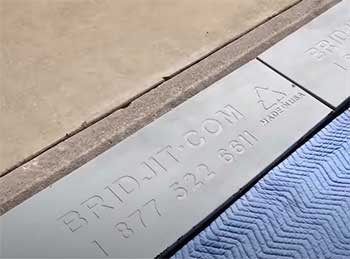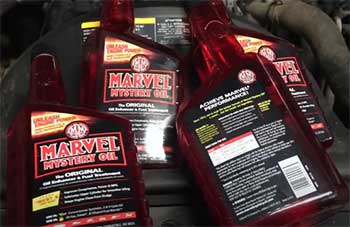For drivers, a jarring transition between the street and driveway over a tall curb can cause bumpy discomfort and even damage to your car’s wheels, axles, and undercarriage. Curb heights from 6 to 8 inches present a significant drop-off that most vehicles were not designed to handle at ingress/egress angles.
Thankfully, there are several options available for smoothing the transition that will prevent damage and avoid those painful jolts.
What Is Bridjit?

Bridjit is a portable aluminum curb ramp system that can provide temporary access over tall curbs and other obstacles.
When deployed, the retractable telescoping ramps create an ADA-compliant transition with a gradual sloped incline from the driveway up to the curb height.
Bridjit ramps deploy quickly when needed and fold into a compact case.
Bridjit ramps offer some benefits for car access:
- Portability – The 14 pound ramps can be taken anywhere.
- Speed – Fast setup and takedown.
- Adjustability – Fits curbs from 3 to 7 inches tall.
- Durability – Sturdy aluminum construction.
- Retractability – Folds into a briefcase for storage.
There are also some downsides:
- Narrow width – Only 28.5 inches wide, not ideal for cars.
- Price – Around $700-$800 per ramp.
- Set-up required – Must manually place and remove the ramps.
While Bridjit can provide temporary smoothing of curb drops for cars, permanent or semi-permanent ramp solutions are often better suited for regular vehicle access.
Alternatives To Bridjit Curb Ramp
Here is a list of those alternatives:
- Permanent Driveway Curb Cuts
- Portable Driveway Ramps
- Temporary Asphalt Driveway Ramps
- DIY Curb Cut Installation
Let’s talk in detail about them.
Permanent Driveway Curb Cuts
Installing an adequately-sized curb cut with a permanent ramp is often the best solution for long-term vehicle access. Curb cuts with gradual slopes eliminate the jarring drop-off when entering or exiting a driveway. According to codes, residential curb cuts should have:
- A sloped straight-line ramp of 12-15% maximum grade, with flatter slopes ideal.
- A minimum width of 10 feet to accommodate cars, up to 20 feet for larger vehicles.
- Textured concrete or asphalt for traction.
- Detectable warning pads for pedestrian safety.
Curb cut ramp materials include:
Concrete Curb Cuts

Concrete stand up to heavy use with the right installation and preparation. Custom colors, textures, and patterns can be added. Professional installation is recommended.
Pros:
- Extremely durable for constant vehicle use.
- Allows for decorative customization.
Cons:
- Expensive professional installation.
- Cracking and chipping can develop over time.
- Removing or replacing concrete is difficult.
Asphalt Curb Cuts
Asphalt provides a smoother surface but requires more maintenance as it wears down with use. Regular sealing and patching is needed to maintain the shape and slope.
Pros:
- Smoother surface than concrete.
- More DIY-friendly installation.
- Easy to patch and repair as needed.
Cons:
- Requires frequent maintenance.
- More prone to depressions and unevenness over time.
- Durability is lower than concrete.
Modular Plastic Curb Cuts
Interlocking plastic modular sections create a removable and adjustable ramp. The synthetic materials resist weather and wear.
Pros:
- Easy DIY installation without demolition.
- Materials weather well without cracking.
- Damaged sections can be replaced.
Cons:
- Higher cost than asphalt solutions.
- Not as durable as poured concrete.
- Still requires physical labor to install.
Consider code requirements, expected vehicle volume, and aesthetics when choosing permanent driveway curb cut materials.
Portable Driveway Ramps

Portable roll-out ramps allow you to create smooth access anywhere it’s needed temporarily. Several types are available:
Single-Fold Ramps
Inexpensive single-fold ramps made of aluminum or plastic unfold quickly for basic use.
Pros:
- Lightweight and portable.
- Low cost.
Cons:
- Low weight capacities.
- Minimal height adjustability.
- Narrow width.
Multi-Fold Ramps
Multi-fold ramps made of higher-capacity aluminum or steel provide more durability and customization for a higher cost.
Pros:
- High weight capacities up to 15,000 pounds.
- Wider widths up to 84 inches.
Cons:
- Heavier to position.
- More expensive.
Yard Ramps
Low-profile yard ramps create a gradual slope across lawn areas, allowing access without pavement. Ground spikes provide stability. Best for occasional use.
Pros:
- Avoid need to pave temporary access route.
- Quickly moveable.
Cons:
- Not suitable for frequent use or heavy vehicles.
- Requires level lawn area.
Tire Trax
For extremely muddy conditions, Tire Trax muddy driveway ramps provide temporary traction.
Pros:
- Allows driving on extremely muddy or soft surfaces.
- Portable and reusable.
Cons:
- Single-use scenarios like construction sites.
- Limited sizes and configurations.
Consider expected vehicle weights and dimensions to select the right portable ramp system for your needs.
Temporary Asphalt Driveway Ramps

During driveway construction before the permanent curb cuts are completed, temporary asphalt ramps can provide access. Compacted asphalt provides a smooth surface capable of handling heavy vehicle loading.
Pros:
- Quick, smooth application.
- Withstands heavy loads.
- Low cost materials.
Cons:
- Requires frequent cleaning and maintenance.
- Runoff and erosion control important.
- Not suitable for permanent long-term use.
Other Creative Solutions
Beyond typical ramp products, some creative options can also work:
Gradual Earth Berms
A gently sloped dirt mound can provide a makeshift ramp over a curb or obstruction. Best for extremely temporary use and lighter vehicles.
Pros:
- Extremely inexpensive.
Cons:
- Requires space for earthen berm.
- Not durable for frequent use.
- Can scatter dirt onto driveway or street.
Sturdy Wood Planks
Thick wooden planks can form a basic temporary ramp option. Best for lighter vehicles only.
Pros:
- Low cost using standard materials.
Cons:
- Minimal weight capacity.
- Requires secure anchoring.
- Splintering and deterioration likely over time.
Rubber Mats
Heavy rubber mats like those used for equipment access can create a flexible ramp surface.
Pros:
- Provides traction.
- Easy repositioning.
Cons:
- Limited adaptability based on mat sizes.
- Aesthetically unappealing.
For heavy or frequent vehicle use, permanent or commercial ramp-type solutions are best. Creative solutions may work temporarily for lighter vehicles. Carefully assess conditions and vehicle loads.
DIY Curb Cut Installation
Ambitious DIYers can potentially install their own driveway curb cut ramp. However, this is a major project requiring planning and preparation:
- Research permit requirements and code specifications thoroughly. Failure to comply could require removal and reconstruction.
- Assess the existing sidewalk and curb structure. Removal techniques and equipment needs should be identified.
- Determine the ideal ramp design and materials to handle expected vehicle weights and turning movements.
- Identify specialized tools and equipment that will need to be rented or purchased. Proper use and safety are critical.
- Carefully plan out underlying excavation, grading, and soil compaction to provide lasting support.
- Select durable materials optimized for vehicle use, like concrete or heavy modular pavers.
- Install proper joints, seals, and finishes for long-term durability and to prevent erosion.
Installing your own high-quality curb cut requires advanced DIY skills. While cost savings are possible, the scale of work involved is substantial. Pursuing professional assistance is recommended for most homeowners.
Also Read: Comparison of Rapid Jack And Trailer Aid Tire Changing Ramps.
FAQs About Curb Ramp Alternatives
Bridjit ramps allow temporary smoothing of curb drops which helps car access. But the ramps are relatively narrow and require manual setup/takedown. For regular car use, more permanent wide ramp solutions are usually preferable.
Yes, residential curb cuts to create sloped driveway access ramps are allowed with proper permits. There are specific codes for allowable width, slope, and construction methods which must be followed.
For durability under heavy vehicle use, concrete is the gold standard for driveway curb cuts. However, concrete requires professional expertise. Asphalt or interlocking modular materials can also work well when properly installed and maintained.
Recommended maximum slope is around 12-15% to avoid scraping or damaging car undercarriages. Flatter slopes under 10% are ideal for a smooth and comfortable transition. Always comply with local codes and permit requirements.
Closing Remarks
Bridjit provides a convenient temporary option for smoothing curb drops. But for regular car access, permanent curb cut driveway ramps or commercial roll-out ramps are better suited to withstand wear and tear without damage or discomfort.
Carefully assess your needs and research options thoroughly before altering curbs and driveways. With the right ramp solution, an improved transition can make arriving home smoother than ever.

